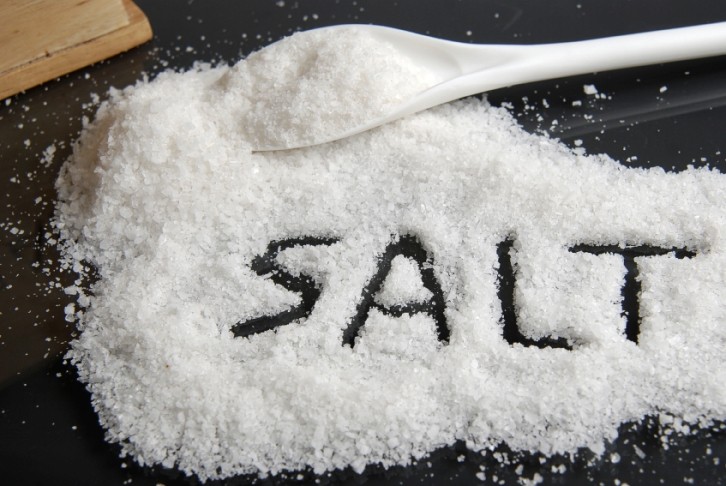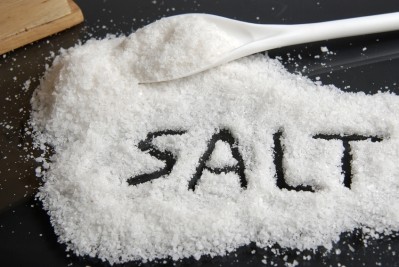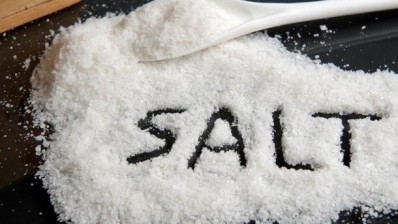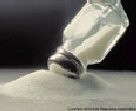CDC report flags high sodium consumption among kids; we’re at the mercy of the food industry, RD says

Based on the results of data collected from 2,375 children aged 6 to 18 years in 2009 and 2010 as part of the National Health and Nutrition Examination Survey, the report found that 65% of sodium intake comes from foods purchased at grocery or convenience stores, 13% from fast food/pizza restaurants, 5% from other restaurants and 9% from school cafeteria foods.
More than 40% (43%) of sodium came from just 10 food categories: pizza, bread and rolls, cold cuts/cured meats, savory snacks, sandwiches, cheese, chicken patties/nuggets/tenders, pasta mixed dishes, Mexican mixed dishes, and soups. Thirty-nine percent of sodium was consumed at dinner, followed by lunch (29%), snacks (16%) and breakfast (15%). The numbers excluded salt added at the table, which CDC estimates is about 5% of total intake.
Average daily sodium consumption declined slightly over the past decade among younger (aged 13 years and younger) school-aged children, but not among adolescents (who had the highest sodium intake, along with males), and not in terms of sodium consumed per calorie. Among children aged 14 to 18 years, 16% of total sodium intake came from fast food/pizza restaurants versus 11% among those aged 6 to 10 years or 11 to 13 years. Intake was lowest among children who qualified for reduced-price school meals, and did not vary by race/ethnicity or weight status.
Unconscious affinity for ‘salty’
Lisa Young, RD, PhD, New York University, said part of the problem is that many of us are unaware of high sodium levels common in foods we eat everyday, such as bread. Not only that, but saltiness is something many US consumers have come to expect in food.
“We know processed food, tomato sauce, cheese and fast food are major sources of sodium. What we don’t always realize is bread,” Dr. Young told FoodNavigator-USA. “Salt is a common preservative in things like bread to give it a longer shelf life. People get used to the saltiness of foods; our palates become trained to over-salt. So what happens is, because food bought outside the house is oversalted, at home you’re used to that salt so you use more in cooking.”
Although hypertension, heart disease, and stroke are more common among adults, their origins can be in childhood: an estimated one in six US children aged 8–17 years have pre–high blood pressure or high blood pressure. Children with higher blood pressure are more likely to develop hypertension as adults.
Meta-analyses of studies of diverse groups of children have found that lowering sodium intake reduces average blood pressure; a 42% sodium reduction in children reduces average blood pressure by 0.6–1.8 (systolic)/0.7–1.9 (diastolic) mm Hg (7,8). A 2 mm Hg reduction, if maintained into adulthood, could translate into a large reduction in heart attacks and strokes and subsequent mortality.
The CDC authors wrote that the findings reinforce the Institute of Medicine’s recommendations that FDA to set mandatory sodium limits for processed and restaurant foods, gradually reducing those levels in a manner not to be disruptive to industry and to acclimate consumers to less-salty foods.
“We all need to make concerted effort not necessarily to market low sodium foods—kids don’t already have high blood pressure so we’re not trying to sell them medical food. But the norm has to be lower sodium content,” Dr. Young said. “It’s important that the food industry take that lead because We eat out so much in this country that we’re at mercy of the food industry. Like anything else, we’ll have to see how voluntary initiatives work before make them mandatory.”
We're at the mercy of the food industry
Indeed, multiple manufacturers have promised to reduce sodium (with many starting their efforts covertly as much as 10 years ago). Last fall Nestle pledged to expedite salt reduction in savory products form such well-known brands as Maggi, Stouffer’s and Buitoni; Mondelez has promised it will slash sodium by 10% by 2020; and General Mills pledged to reduce sodium by an average of 20% across its top 10 categories by 2015 (and appears to be on its way, having reformulated more than 750 products since 2005 to cut sodium—along with calories, fat, saturated fat, trans fat and sugar—by 10% or more).
Moreover, national nutrition standards for school breakfasts and lunches and almost all foods sold in US schools set phased targets for sodium content starting with the 2014–2015 school year, which are projected to result in a 25 to 50% sodium reduction in school meals by 2022. According to CDC, this measure could reduce sodium intake in children by 75–150 mg per day overall, and about 220–440 mg on days school meals are consumed, barring replacement from other sources.
Source: Centers for Disease Control and Prevention Morbidity and Mortality Weekly Report
http://www.cdc.gov/mmwr/preview/mmwrhtml/mm63e0909a1.htm?s_cid=mm63e0909a1_w
“Vital Signs: Sodium Intake Among U.S. School-Aged Children — 2009–2010”
Authors: Mary E. Cogswell, Keming Yuan, Janelle P. Gunn, Cathleen Gillespie, Sarah Sliwa, Deborah A. Galuska, Jan Barrett, Jay Hirschman, Alanna J. Moshfegh, Donna Rhodes, Jaspreet Ahuja, Pamela Pehrsson, Robert Merritt, and Barbara A. Bowman
















